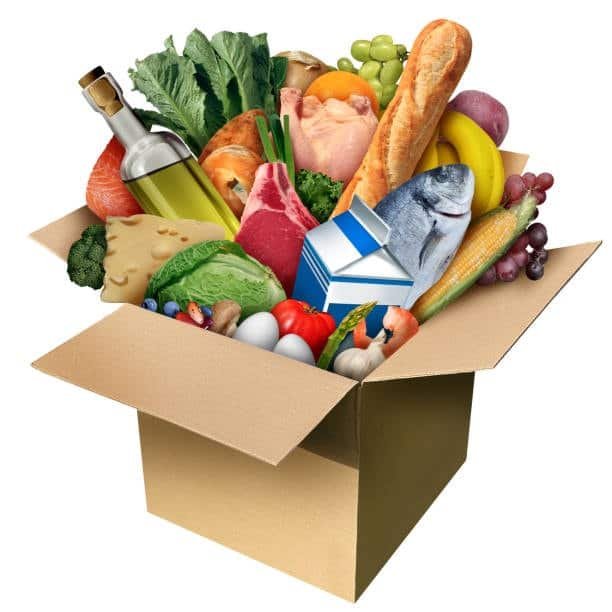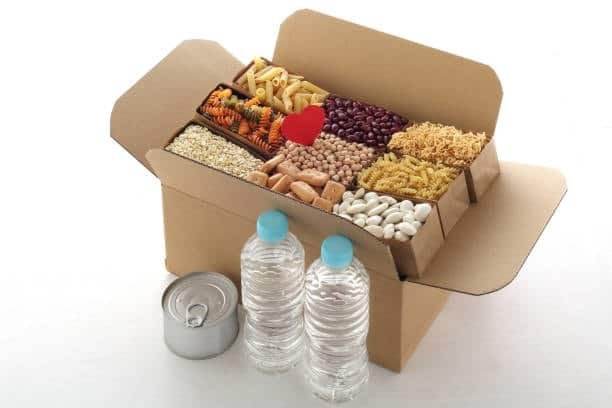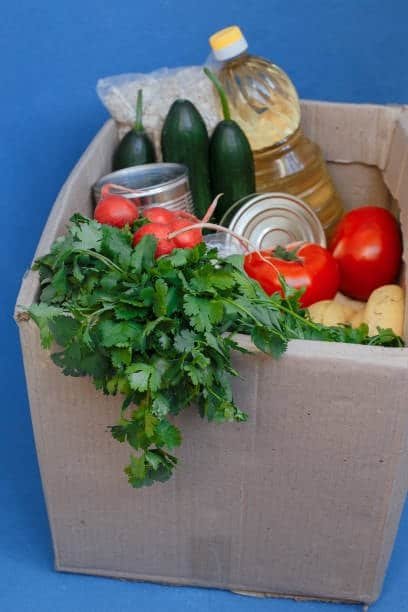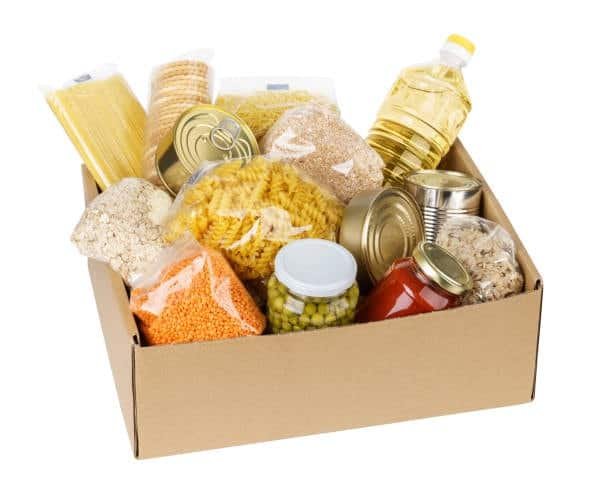Moving perishable food products, including shipping frozen food, requires paying special attention to planning, proper packaging and strict rules. It’s important to know how perishable food shipping works for both small business owners wanting to grow and for people who want to send hand-made snacks to friends and family ship frozen food.
Understanding Perishable Food Categories

Perishable foods are separated into different groups and each group has its own shipping services and rules shipping frozen food promptly. Everything such as fresh fruits and vegetables, dairy products, meat and poultry, seafood and prepared meals, must be stored and cooked following their individual requirements. Knowing these categories can show you the proper way to ship and package your items frozen food items.
Legal Requirements for Shipping Food

You should make sure your business follows all laws and requirements set by the federal, state and local governments for shipping perishable food. Much of the rules for food shipment are overseen by the FDA and the USDA monitors meat, poultry and egg products. Some states require companies selling foods to get licenses and before shipping certain products, you may need special permits or certificates packed and frozen foods.
Choosing the Right Shipping Carrier

Shipping companies do not treat perishable foods in the same way. UPS, FedEx and DHL give customers the option of shipping items in special temperature-controlled containers, though USPS does have fewer choices for this type of shipping. Learn what each carrier needs from you regarding perishable goods, what they do not allow and which areas they serve. There are carriers who will not ship certain perishables or ask for additional agreements when you need to ship food frozen gel packs.
Temperature Control Methods
It is very important to keep food at the correct temperature during delivery, especially when dealing with extreme temperatures . Items inside your fridge should be at 32-40°F, but frozen foods have to be kept at 0°F or even colder. Useful ways to cool products are dry ice, gel packs, foam insulation and professional refrigerated containers ice packs. Factors involved in the choice are how soon the product needs shipping, its type and the budget available cold food.
Packaging Materials and Containers

Proper packaging helps maintain the temperature and stop food from getting damaged as it is shipped. To pack perishable food, people use insulated containers, insulated shipping boxes, thermal bubble wrap, foam coolers and vacuum-sealed bags. The packaging should be safe for food, should not leak and should be just big enough to fill any air volume and protect the refrigeration usps priority mail express.
Dry Ice Usage and Safety

To preserve the frozen state, dry ice is very efficient, though it calls for special attention and clear labeling. It turns into a gas at a very cold temperature of -78.5°C which is ideal for keeping frozen foods safe. Still, since dry ice is hazardous, it must be shipped safely, staff must be protected and proper documentation is needed ship perishable foods. A lot of carriers control the amount of dry ice that can be shipped and expect handlers to complete proper training shipping container.
Gel Pack Solutions
Gel packs are safer than dry ice for keeping food cold. You can find cooling elements such as cold packs in different sizes and temperature areas. Certain gel packs keep products at the right temperature for a long time which makes them suitable for deliveries over longer distances. Liquid nitrogen is simpler to deal with than dry ice and there is no need for hazardous material paperwork Who was trying to lead the fight against the bulls?.
Insulation Techniques

Good insulation minimizes swings in the shipping temperature. Stability in temperature is helped by foam insulation, reflective bubble wrap and packaging that is vacuum-sealed. Insulation needs to be thick enough for the length of the shipment and the temperature outside. A good Insulation layer helps dry ice or gel packs stay cool longer insulated container.
Vacuum Sealing Benefits

Air is taken out during vacuum sealing which limits oxidation and makes food last longer. I find this works extremely well for meats, cheeses and any kind of prepared food. Pac racking mylar bags takes less room and improves insulation, making packing easier. The process makes it harder for problems like leaks or contamination in shipping watertight plastic bags.
Express vs Standard Shipping
Most perishable goods must be delivered quickly, especially when shipping perishables, to avoid damage and risks to safety. Overnight and 2-day delivery services help your products get to your clients as quickly as possible and keep the likelihood of spoilage very low. Choosing express shipping usually is cost-effective because it helps prevent losses from products going bad and keeps customers happy proper packaging materials.
Shipping Time Considerations

Getting products to the customer on time is very important for perishable foods. Ship products so they arrive before or after weekends and holidays to prevent packages from sitting in warehouses for no reason. Be aware of the weather at the destination, since temperature can change the way your food item package is protected. There are some companies that have set times for picking up and delivering perishables, to limit the transportation period perishable food items.
International Shipping Challenges
The process of shipping perishable foods, including shipping frozen foods around the world and domestic and international packages , is difficult because of extra regulations, licenses and longer transit lengths. A lot of countries forbid the import of some foods or request detailed paperwork. Frequently, moving food internationally requires carriers who are experienced with food import regulations and customs rules insulated box.
Cost Analysis and Budgeting

Sending perishable goods and shipping frozen item is expensive since it involves special ways of packing, faster services and usually requires insurance. Remember to include the cost of materials for packaging, cooling, moving the goods and possible replacements for broken shipments. A good budgeting process allows you to discover which business prices attract shoppers and which shipping systems are most practical overnight delivery services.
Labeling and Documentation
The right labels help transport and handling workers stay safe. Transporting refrigerated food items and perishable food packages needs special labels that mention the temperature details, how the packages should be handled and what is in them. There are products that also need health certificates, ingredient lists or nutritional information included in their shipment. Good labeling makes it easier to manage and use products from EHS and also ensures they follow regulations.
Insurance Options

If perishables you are shipping get damaged, spoil or are lost, shipping insurance helps you cover the financial losses. Because regular shipping insurance does not usually provide coverage for perishable items, extra insurance is required. Use the value of the product, the distance it will be transported and the dependability of the carrier to set proper insurance amounts. Some companies provide insurance designed for perishable food goods.
Quality Control Measures
Making sure quality control is followed leads to efficient and effective shipping. Cooling systems, devices for verifying package integrity and confirmation systems for deliveries are among these. Using data loggers, some companies monitor temperature during shipping which helps them improve manufacturing and reassure customers.
Seasonal Shipping Considerations

Shipping perishable food is heavily affected by the weather. You need extra cooling and more wall insulation for the summer heat and cargo doors should be full-framed in winter to avoid freezing. Make plans for the busy periods, review your packaging solutions and take account of different weather conditions.
Customer Communication
Talking clearly with customers lets them know what to expect and makes sure everything is delivered properly. Send information about tracking, how to receive the delivery and how to store all items as soon as you have them. Teach buyers how to protect the food in their deliveries and address next steps in the case of damaged or warm food.
Common Shipping Mistakes

Avoiding common errors will keep your shipping, including the use of plastic bags, from being a failure. Some examples are when the product is not properly insulated, when the right cooling elements are missing, when good packaging is missed and when the required labeling is skipped. Having extra layers can lower insulation and having too few layers lets temperature fluctuate. Get ideas from successful businesses and always look for ways to boost how shipping is done.
Food Safety Guidelines
Ensuring food safety is important from beginning to end of the shipping process. Apply HACCP guidelines, carefully manage temperatures, prevent foods from mix and be able to trace all batches, including carbon dioxide considerations for packaging . Make records of all temperature readings, container conditions and how the product is handled. Any changes to food safety regulations may cause both physical risks and issues with the law.
Emergency Procedures
Create steps to handle delays in shipping, out-of-range temperatures for packages and damage to goods in transit. Decide on the protocols for talking to your customers, what to do in case of a replacement product and your refund guidelines. Dealing with emergencies in shipping promptly protects relationships with customers and reduces the negative effects on the business.
Technology Solutions

The modern technology we have provides solutions for the problems of shipping perishable items. Using temperature monitoring tools, location tracking and automatic alerts helps maintain product integrity. Some systems supply current data that helps both the shippers and their customers solve problems quickly.
Sustainable Shipping Practices
Paying attention to the environment matters more and more for food transportation. Environmentally aware customers are attracted to reusable packaging, environmentally friendly methods of cooling and carbon-neutral ways of shipping. Practices that help the environment can make a brand spend less over time and gain a good reputation.
Building Customer Trust
For a business to succeed in shipping perishable goods, trust is very important. When the quality is always good, orders are delivered on time and customers receive answers quickly, they feel more comfortable with the company. Being honest about how shipments work, letting people know when deliveries might be late and acting quickly to solve issues add to lasting customer relationships.
Scaling Your Shipping Operations

When your perishable food shipments go up, it is very important to use effective operations. If you follow streamlined packaging, buy a big supply of materials at once and negotiate with carriers, it will help cut your costs. Use automated tools, staff specifically for shipping and designate areas for handling more orders.
Future Trends and Innovations
The industry of shipping perishable food, including refrigerated foods, is always growing due to new technologies and practices. Stuffing packages with temperature sensors, delivering locally by drone and finding better insulation are growing practices. Following new industry developments offers competitive advantages and improves how deliveries are made.
Conclusion
Shipping perishable food, especially refrigerated food, involves paying attention to how cold it remains, how it is safely packaged, rules made by authorities and talking to customers. Spared money on proper packing and fast delivery is recovered in the form of positive feedback and repeat visits from customers. Although perishable food shipping is difficult, it allows businesses to extend their customer base and sell across the country.

